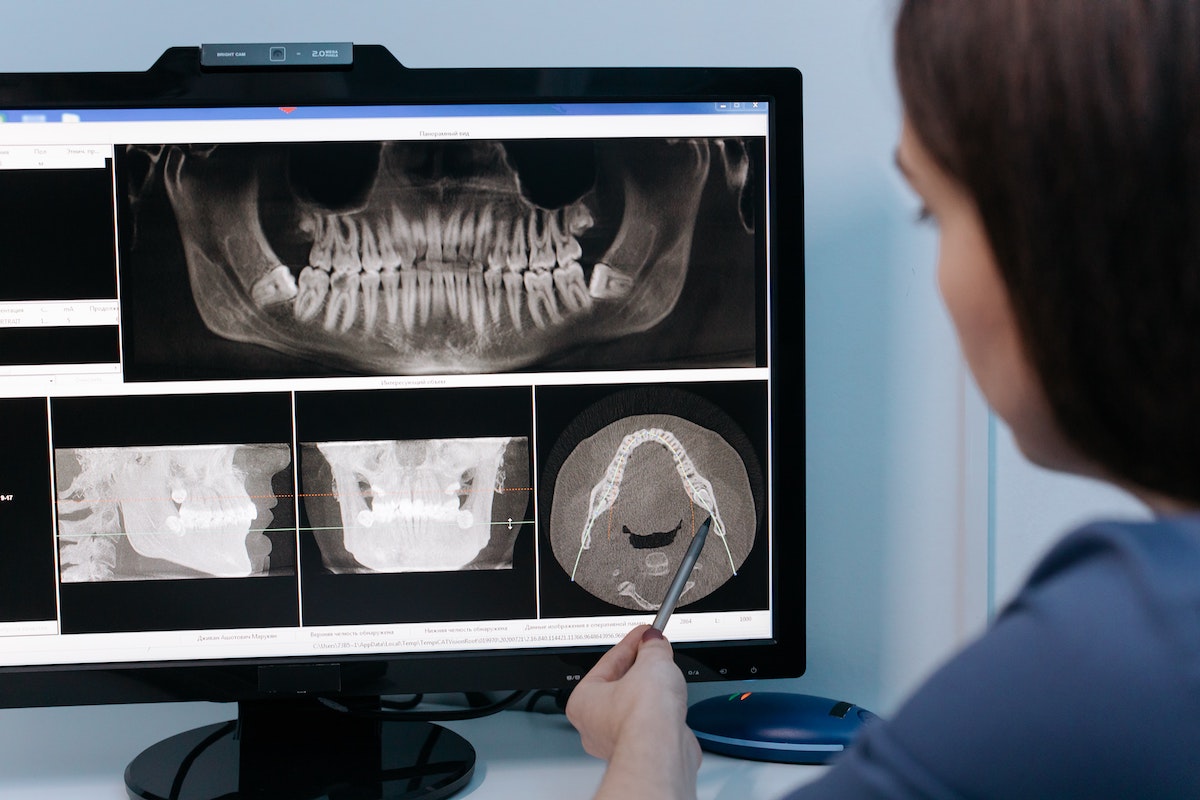Dental crowns are an effective tool in restoring damaged or decayed teeth. Even though crowns are not expected to last forever, patients might assume they no longer need to worry about getting a cavity in the crowned tooth. Unfortunately, it is possible to get cavities under a dental crown. And just like cavities anywhere else in the mouth, a cavity under a crown needs to be fixed as soon as possible.
The Purpose of Dental Crowns
Dental crowns are artificial caps that a dentist places over a tooth. They are made of strong materials such as gold, stainless steel, porcelain, or composite resin. These vary in cost and durability. Porcelain and resin can match the tooth’s natural color. Regardless of the material used, they are all shaped to feel like real teeth.
A crown might be necessary for dental health reasons, cosmetic purposes, or both.
Large (or multiple) cavities. Tooth decay is usually fixed with a dental filling, but if a cavity grows too big, a dentist might recommend a crown instead. This might also be the case if several fillings have been added to a tooth over time.
Root canal procedures. Root canal is a procedure that removes the root of a badly decayed tooth. Once the infected tissue is taken out, a dental crown is placed over the tooth, sealing it off from further decay.
Cosmetic imperfections. Crowns might be used to cover teeth that are healthy, but otherwise flawed or damaged. Chips, cracks, discoloration, oddly shaped teeth, or other imperfections can all be concealed with crowns.
Bridges. Bridges, like dentures, are false teeth that replace missing ones. Dental crowns are attached to neighboring teeth so the bridge has an anchored spot to attach to.
How Cavities Under Dental Crowns Happen

With the exception of a crown placed on top of a dental implant, all of the cases listed above involve at least part of the original tooth. (Dental implants are false teeth that completely replace a missing tooth.) The crown is meant to keep out bacteria, but given certain conditions, any real tooth enamel can be vulnerable to decay that causes cavities.
Decay on the Margin
Along the edge of the crown at the gum line, a bit of the real tooth might be exposed. This is especially true if a patient’s gums are receding, possibly from periodontal disease. Plaque can build up in the gap and eat away at the tooth enamel just beneath the crown.
Wear and Tear
Depending on the material, crowns can last 10 to 25 years or longer. They are strong, but they will wear down, especially if they cover molars which have the job of heavy chewing. If a patient grinds their teeth at night (called bruxism) they can deteriorate faster. Very old crowns might chip or crack, letting in cavity-causing bacteria. Breaks can also happen due to trauma such as being hit in the mouth.
Failed Root Canal
If any decayed tissue is left behind during a root canal procedure, it can spread into a larger cavity under the dental crown. This sometimes happens with molars, where the root system can be intricate and branch off into several tiny or curved canals.
Poorly Fitted Crowns
If the dental crown’s shape does not fit snugly to the tooth, or if it is not placed properly, there might be tiny gaps where bacteria can get inside.
Neglecting Oral Hygiene
Crowned teeth should be cared for in the same way as natural teeth. Proper brushing and flossing is necessary to remove plaque and keep them clean. Just because the crown material itself can not develop decay, that does not mean that the tooth beneath it is completely safe.
Diagnosing Cavities Under Dental Crowns

As with any cavity, cavities under dental crowns should be found and fixed as soon as possible to prevent further damage that can endanger the affected tooth and its neighbors. Along with good dental hygiene, patients should see their dentist for regular checkups every six months.
Dentists typically do x-rays each year to look for cavities and other abnormalities. Cavities on the margins of a crown can be more difficult to spot than on a natural tooth, but a dentist will usually take special care to make sure that crowns are not loose and the underlying tooth and gum are in good shape.
A patient might experience pain in or around a crowned tooth. This could be a sign of a cavity, and unfortunately it could be quite large if it has been left alone long enough for it to begin to hurt. It is best to see a dentist right away. They can check to see if there is indeed a cavity, or if there is some other issue such as a bad fit or a crack. Regardless of the reason, patients should not have ongoing pain with a crown. Something is wrong and the problem should be corrected.
Fixing a Cavity Under a Dental Crown
If a cavity is along the margin of a dental crown and does not go very deep into the tooth, it might be able to be fixed with normal dental filling material. In most other cases, the dental crown probably will need to be removed, the cavity filled, and a new crown placed on top. In complex cases, the dentist might recommend a prosthodontist—a dental professional who specializes in crowns and other dental prosthetics.
If the crown was not part of a root canal and the cavity has reached the pulp chamber underneath it, it might be time for the procedure. The dentist or an endodontist will remove the crown, drill into the root to clean out the infection, seal the hole and attach a new crown.
The same process will happen if a previous root canal failed. The dental professional will drill further to get out the tissue that was left behind in the first procedure, then finish up with a new crown.
If decay has deteriorated too much of the tooth beneath a crown, a last resort might be extraction. Pulling the tooth will solve the problem of the cavity, but missing teeth come with additional problems such as shifting and an uneven bite. Dentures, a bridge, or a dental implant might be recommended to fill the gap left behind.
Preventing Cavities Under Crowns
Getting a crown, whether part of a root canal procedure or not, is not something that many patients would like to do at all, let alone twice. To avoid cavities, good oral hygiene is essential. Just because a crown is an artificial cap, it should not be ignored in the twice-daily routine of brushing and flossing.
And whether you have a crown or not, don’t forget routine checkups with a dentist who can find and fix cavities right away if they do happen. If you’d like to find a dentist near you, use our online search tool to schedule an appointment.


